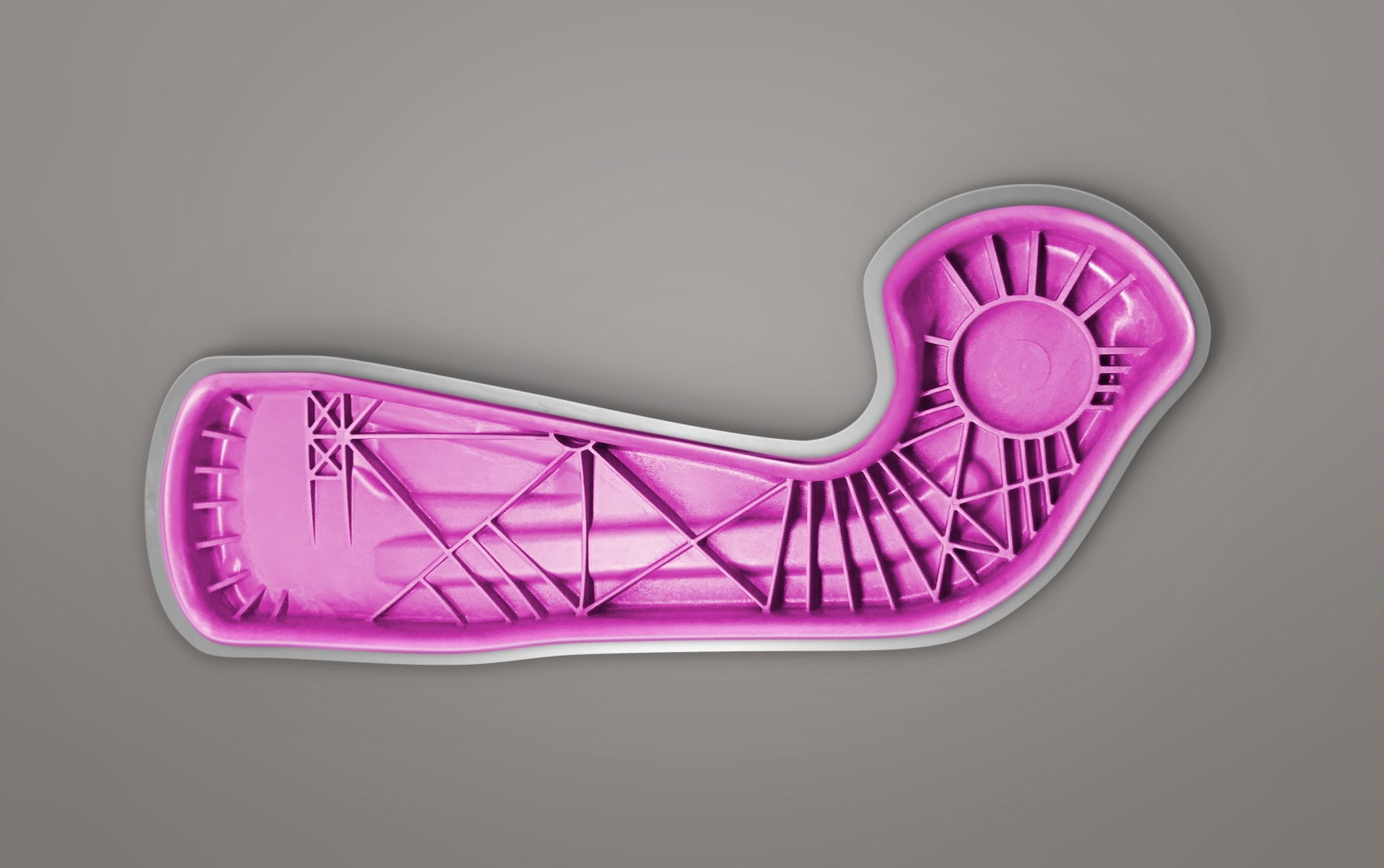The goal was clearly defined: to come up with high-performance manufacturing processes that would reduce the weight of metallic chassis components. The result: weight savings of about 20 percent in two different automotive control arms. This was achieved thanks to adhesive bonding between metal and a long-fiber-reinforced thermoplastic (LFT) by the adhesion promoter VESTAMELT® Hylink. The multiform process for simultaneous forming and molding of fiber-reinforced plastics with metal plates is used here.
 |
|
The longitudinal control arm made of high-strength steel plate and VESTAMID® PA12 with 40 percent long glass fibers substitutes the solid metal part, reducing the weight by about 20 percent |
Composite compression molding process
The metal and plastic components of hybrid parts are typically bonded with the help of frictional or form fit elements such as screws, rivets, or by overmolding and insert molding. The challenge in the case at hand was to come up with a novel production process that includes the forming of the metal plate as well as the molding of the long-fiber-reinforced thermoplastic, taking into account reinforcement ribs and a variable wall-thickness distribution of the fiber-reinforced plastic (BMBF: Multiform 02PN2081). For this process an adhesive bonding technology such as is offered by VESTAMELT® Hylink is an absolute necessity.
The longitudinal and transverse control arms of the car rear axle of a well-known German car manufacturer served as demonstration components; originally made from solid metal, these were now produced by the multiform process.
Subprojects on the design, simulation/computation, and testing of components made from a novel FRP metal composite material were carried out under the guidance of Prof. X. Fang at the University of Siegen. From these, and the subsequent process development, a new solution was developed consisting of a high-strength steel plate and a long-glass-fiber reinforced thermoplastic that are bonded with the adhesion promoter VESTAMELT® Hylink. For demonstration purposes, for example, a polyamide 6, polyamide 610, and polyamide 12 with 40% long glass fibers were used in a longitudinal control arm.
In the multiform process a long-glass-fiber reinforced compound produced by Weber Fibertech GmbH is extruded to give a moldable semi-finished product. Together with a preheated metal plate coated with VESTAMELT® Hylink this is transferred in the molten state into a mold. In a one-step production process both parts are pressed into shape and simultaneously joined together. The mold incorporates the desired negative form for the ribbing and the forming of the metal. Thanks to the process-integrated bonding of steel and LFT by VESTAMELT® Hylink, a bonded hybrid component can be obtained directly from the mold. This method could be a technical and economical substitute for the conventional multi-step production process.
By combining steel and LFT, materials of two different types (two dissimilar materials), it has been possible to reduce the thickness of the steel plate by more than a millimeter from the original. This results in about 20 percent less total weight of the demonstration longitudinal and transverse control arms.
About Evonik
Evonik is one of the world leaders in specialty chemicals. The focus on more specialty businesses, customer-orientated innovative prowess and a trustful and performance-oriented corporate culture form the heart of Evonik’s corporate strategy. They are the lever for profitable growth and a sustained increase in the value of the company. Evonik benefits specifically from its customer proximity and leading market positions. Evonik is active in over 100 countries around the world with more than 36,000 employees. In fiscal 2017, the enterprise generated sales of €14.4 billion and an operating profit (adjusted EBITDA) of €2.36 billion.
About Resource Efficiency
The Resource Efficiency segment is led by Evonik Resource Efficiency GmbH and produces high performance materials and specialty additives for environmentally friendly as well as energy-efficient systems to the automotive, paints & coatings, adhesives, construction, and many other industries. This segment employed about 10,000 employees, and generated sales of around €5.4 billion in 2017.









